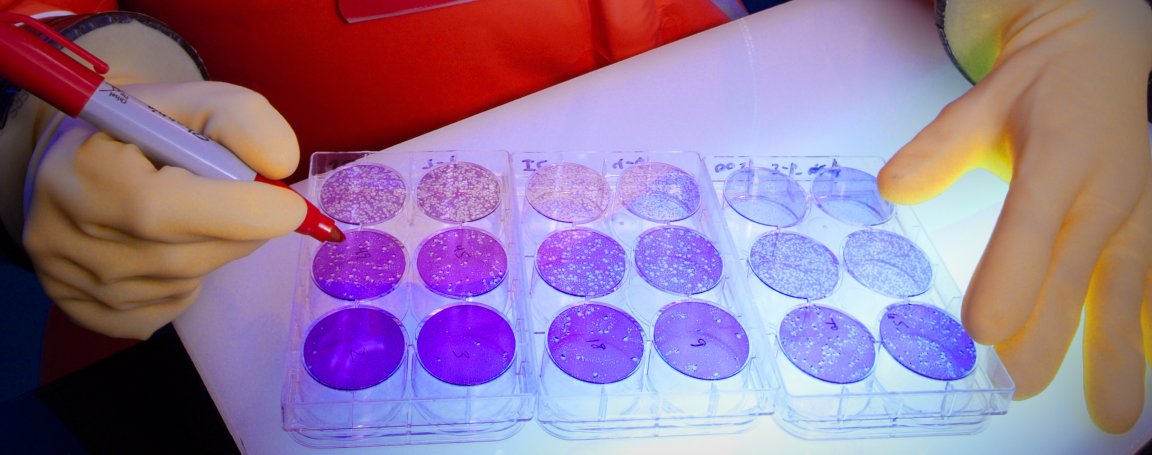
Almost all of these viruses are classified as Biosafety Level 4 (BSL-4) pathogens and as such must be handled in special facilities designed to contain them safely. SPB operates one of the world's few BSL-4 laboratories. In addition, SPB provides technical and research/diagnostic materials to many international laboratories and collaborators. SBP staff members are trained to respond to global disease outbreaks and to provide assistance for disease detection and control measures. Image: CDC/ Dr. Scott Smith
Containing Microbes
If smallpox, Ebola, especially threatening strains of the flu, or other deadly microbes were to spread to large populations, there would be obvious and severe consequences. Containing such pathogens, especially those like smallpox which we’ve managed to eradicate, is vital. It allows us to study the germs, develop preventative measures and treatments, and above all ensure that they are not released.
But, just 13 years after the CDC built a cutting-edge laboratory to house these organisms, the facility has worn down so much that proposed repairs and updates would take years. This is why the CDC is requesting more than $400 million to build a new facility.

There are only eight total facilities in the U.S. that are equipped to work with such high-threat organisms, James Le Duc, director of the University of Texas’s Galveston National Laboratory, told Time. It takes extremely specialized planning to ensure safety while both containing and working with these specimens.
However, while it seems natural to replace and repair aging facilities, this CDC building is fairly new and many are shocked that they are already looking to rebuild.
Faltering Facilities
The CDC’s existing lab, which cost $214 million initially — significantly less than the proposed new facility — was anticipated to last up to 50 years. But many of the original parts used to build the facility’s complex systems are no longer being produced, making containing the deadly microbes a near impossibility. Because of this, those who work with the lab’s dangerous germ inhabitants assert that building a new facility is the best solution.
This new facility — which would cost about $350 million plus $50 million for related work — is proposed to take less time than repairing the existing facility and improve security surrounding the germs. The CDC’s former director, Tom Frieden, said to Time, “The longer it takes, the more likely there will be a failure. And if there’s a failure, we lose an essential line of defense.”
The CDC will likely experience some pushback since the relatively new facility should not be as degraded as it reportedly is and neither repairs nor new infrastructure was expected at this point. However, Frieden is correct in saying that time is an essential element in maintaining safety with these pathogens. A new, $400 million facility seems ludicrous, but the thought of smallpox clawing its way back into the population is beyond frightening.